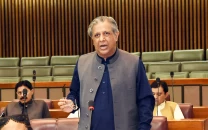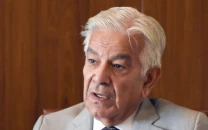Analogy of occupations: palette guns and white phosphorus
Both the people of Palestine and Kashmir were promised self-determination by the United Nations

The current Palestinian conflict and the use of force by Israel to suppress the Palestinian cause is not lost on anyone. Brute force is the modus operandi of occupying forces, be it Israel or India. Brute force in the quest for complete submission or annihilation of the other side.
For any scholar of international relations or international law, it is hard to ignore the glaring parallels between Illegally Occupied Jammu & Kashmir (IIOJK) and Palestine. Both regions have fought hard for their identity and both have been painted red by their aggressors.
The similarities are striking. Both the people of Palestine and Kashmir were promised self-determination by the United Nations. The same United Nations that has stood and watched as India and Israel have carried out the worst human rights violations that this century has witnessed. The indiscriminate bloodshot continues and the Palestinians have not yet attained their state and the Kashmiris have not yet had their opportunity to vote.
A bit of history is important to understand the commonality between Kashmir and Palestine. Both Palestine and Kashmir enjoyed varying degrees of local autonomy as parts of the two last surviving greatest Muslim empires of the world (Turk Ottoman and Mughal Indian, respectively) before they came under British colonial rule. The two territories had for centuries before that been ruled by local administrations, even while they did owe allegiance to the respective imperial authorities. The preceding long tradition of self-rule in Palestine and Kashmir may well have acted as a deterrent against the imperial ambitions in the two cases to bring them directly under central rule. It was the British rule over the two territories which marked the beginning of a change in the traditional demographic mix of both Palestine and Kashmir. Despite this influx of Jews in Palestine and Hindus in Kashmir during the British overlord-ship in the two territories, both were still predominantly Muslim-majority areas.
Looking at this background, it is not hard to imagine why India becomes the biggest supporter of Israel in its aggression against Palestine. The relationship between the two occupying powers, India and Israel, has evolved in a symbiotic nature. The extent of possible collaboration between Israel and India on Kashmir and Palestine can be traced back to the 1940s. It spanned the adoption by India in IIOJK, since 2019, of the repressive measures which Israel continues to use in trying to crush the rightful owners of Palestine. In other words, “India feels that it can learn a lot from Israel's experience in countering the uprising in occupied Arab territories and apply those imbibed lessons against the Kashmiri populace.” In fact, the collusion between Israel and India in this field was reported to have started when the Indian army started getting anti-terrorist training and advice from the Israelis. This came to light in September-October 1992 when militants captured some Israeli commandos (Mossad agents) in Srinagar who were masquerading as tourists.
More than anything else, both these aggressors have acted in blatant violation of international humanitarian law, particularly the Geneva Conventions. Civilian casualties in both IIOJK and Palestine are testament to multiple violations of international law. Both occupiers have succumbed to the use of weapons prohibited by international law such as pellet guns by India and white phosphorus by Israel. In both these conflicts countless civilians have perished, thousands permanently impaired and the lives and livelihoods of the residents damaged beyond repair. Communications blackout was instituted in IIOJK in 2019 that inhibited the international community’s response to the Covid-19 pandemic in the area. The same blackout is currently being witnessed in Gaza that denies the Palestine from life-saving humanitarian aid. Another similarity can be found in the settler agenda instituted by both India and Israel. Indian government’s initiatives to influence non-Kashmiris’ settlement in the area in order to alter Kashmir’s demographic makeup in IIOJK is similar to Israel rapidly expanding Jewish settlements in the West Bank.
The word “democracy” loses its luster when world leaders either abstain from acknowledging the human rights violations in IIOJK and Palestine or worse, support India and Israel. Human rights regimes have been rendered toothless in the face of rogue states invested in repressing democracy. In such cases transnational solidarity and activism are the need of the hour. Connecting the dots between the occupations of IIOJK and Palestine shows the need for a greater solidarity amongst the international community to uphold the ideals that the UN Charter holds as sacrosanct.



















COMMENTS
Comments are moderated and generally will be posted if they are on-topic and not abusive.
For more information, please see our Comments FAQ